XFX 850W Black Edition Power Supply Overview
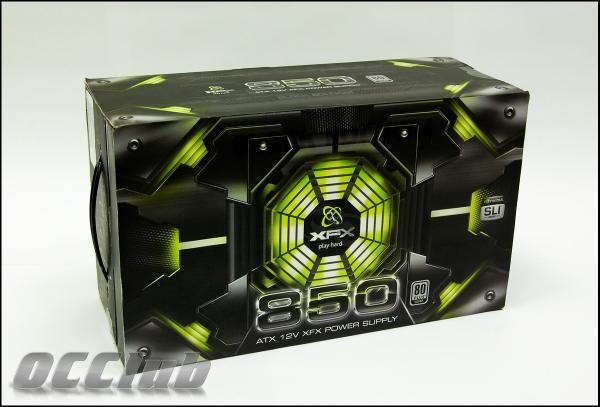
Many manufacturers of components in order to promote their brand and expand the market are beginning to release devices that enjoy steady demand from both ordinary users and advanced computer enthusiasts. An example of this is the release of power supplies by such famous brands as Gigabyte, Zalman, OCZ, BFG. I must say that such BPs always stand out from the crowd by their unusual design, additional options and packaging.
And so, in the fall of 2009, XFX, known for its graphics cards and motherboards, announced a new modular power supply 850W Black Edition. As in the names of video cards, the prefix "Black Edition" indicates that the PSU belongs to the older product series.
Attention! Under the cut a lot of pictures.
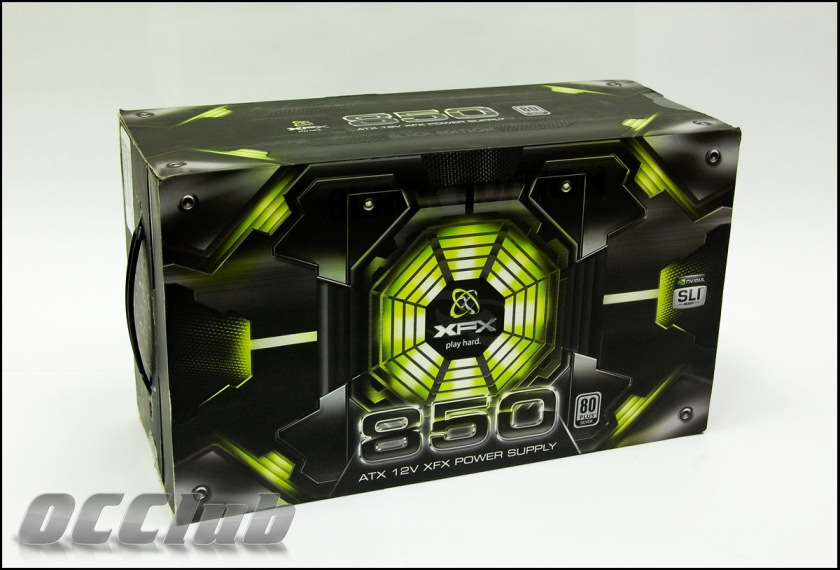
Let's look at the packaging, packaging and design of the power supply. A heavy box painted in XFX brand colors consists of two parts interconnected by a dense laminated cardboard casing. The packaging is equipped with a convenient carrying handle.
Remove the casing and separate the parts of the package. Through a carved window in cardboard, one can already see a large 135mm fan of bright green color.


')
To the left of the PSU there is a package with cables for 2 types of power outlets and a bag with mounting screws. On the right are fixed non-removable wires of the power supply unit itself, as well as instructions attached to the cardboard.

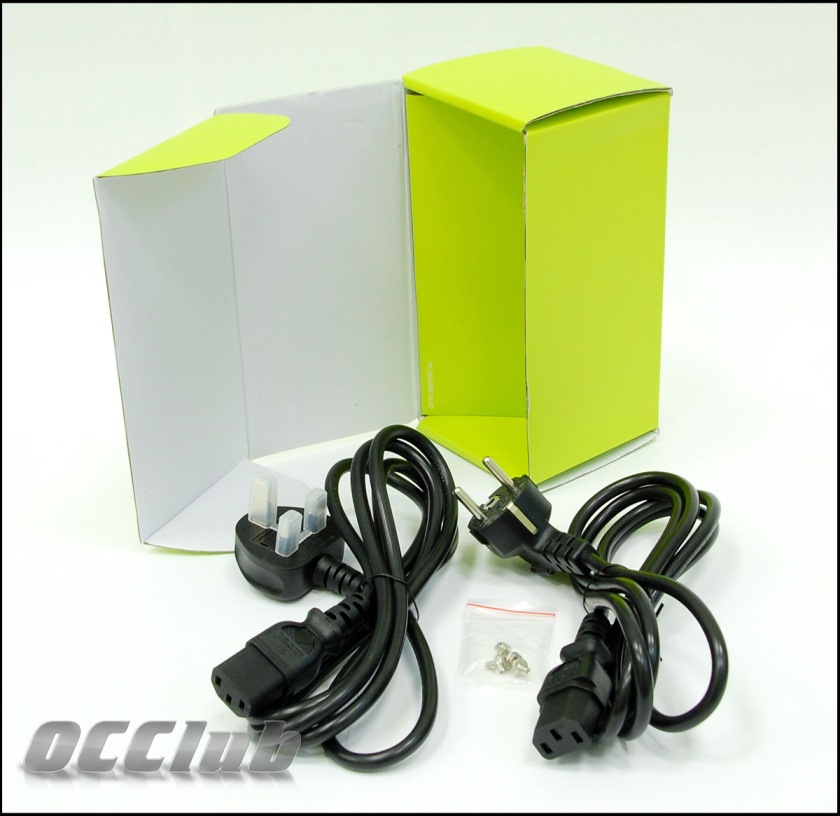
In the smaller box there is a cute black case, which contains a set of pluggable cables.

This kit includes:
- 2 cords for video cards with 6 + 2 pin connectors;
- 3 cords with molex connectors;
- 4 cords with SATA connectors;
- 1 cord with connectors for 3.25 ”devices.
The 24-pin cable (split into 20 + 4 pin), 2 processor power cables (8 pin and 4 + 4 pin), 2 video card power cables (6 + 2 pin) are fixed in the PSU.
Thus, you can confidently connect motherboards with two CPU power sockets to the XFX 850W Black Edition, for example, EVGA Classified and Intel ScullTrail. The number of video card power plugs allows you to simultaneously connect up to 4 boards with 6 pin or 2 boards with 6 + 6 or 6 + 8 pin connectors.
The lengths of each power cable are tabulated:
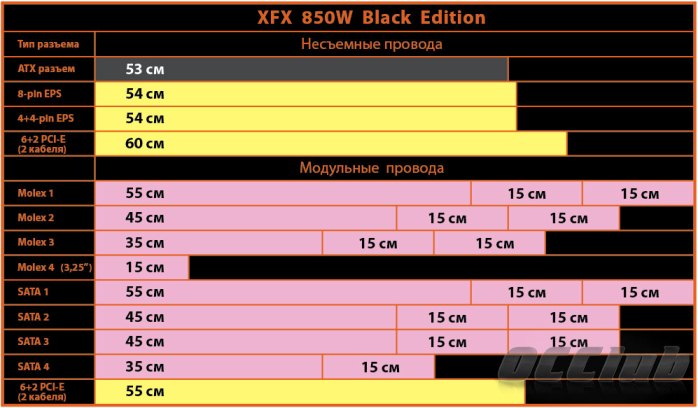
That's the power supply itself. The case of the XFX 850W power supply is made of two main U-shaped extruded profiles: the carrier frame and the top cover.
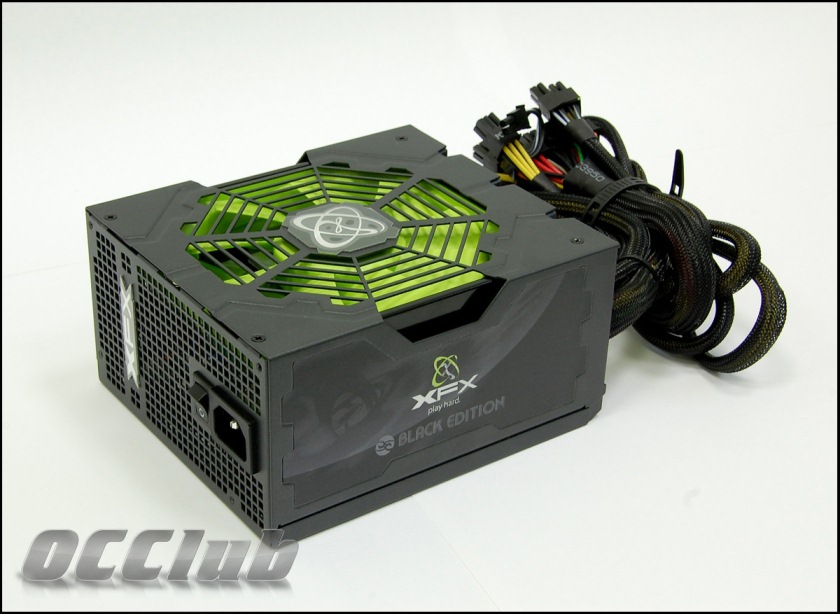
The top cover is made in a very original way: relief stamping is applied on all sides, holes resembling cobwebs for the fan are cut. The metal parts of the body are painted with black textured paint "wet asphalt".
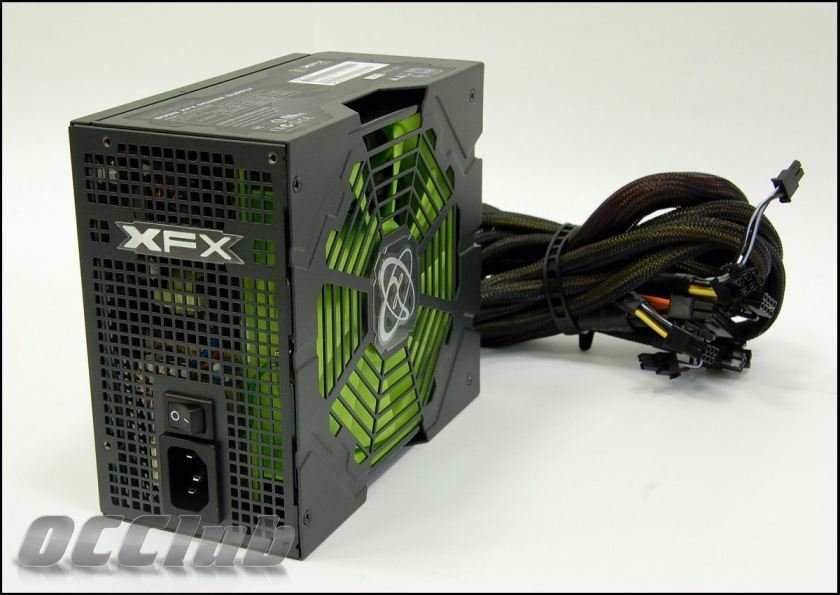
The final design element is a plastic overlay with an embossed XFX logo on the modular connector side.

The load characteristics of the power supply are as follows:
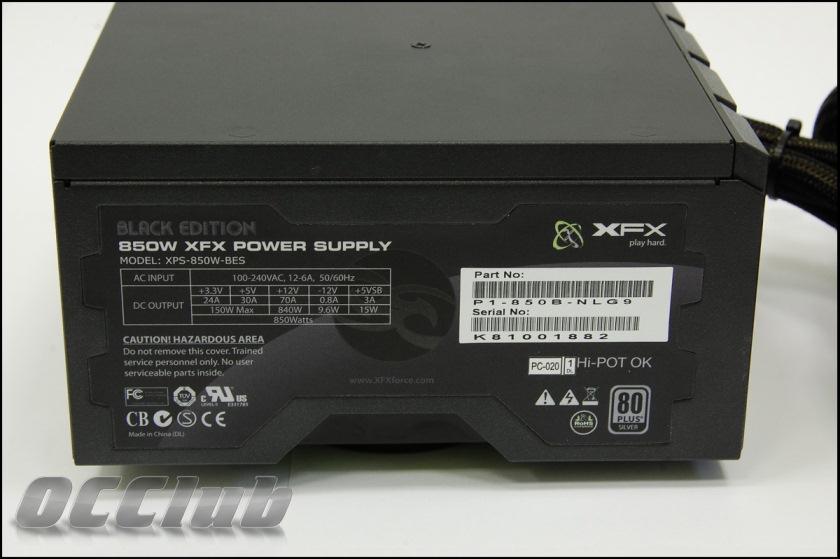
Here it should be emphasized that XFX honestly indicated the presence of one line + 12V. In power supplies from other manufacturers you can often see up to 5-6 lines + 12V, which in most cases is not true, and the “lines” themselves are virtual.
Let's see what the filling is hidden under a beautiful body. It is enough to unscrew the 4 screws to remove the top cover.
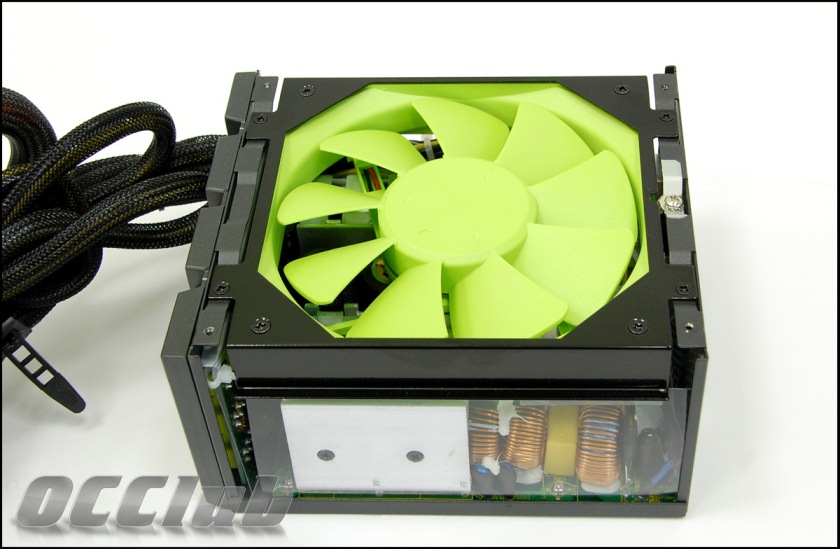
On a massive black frame attached 135-mm fan of bright green. This frame serves both as a fan holder and as part of the case design, peeking through the cut openings in the casing.
Transparent plastic lining serves to optimize the passage of air flow in the PSU case.
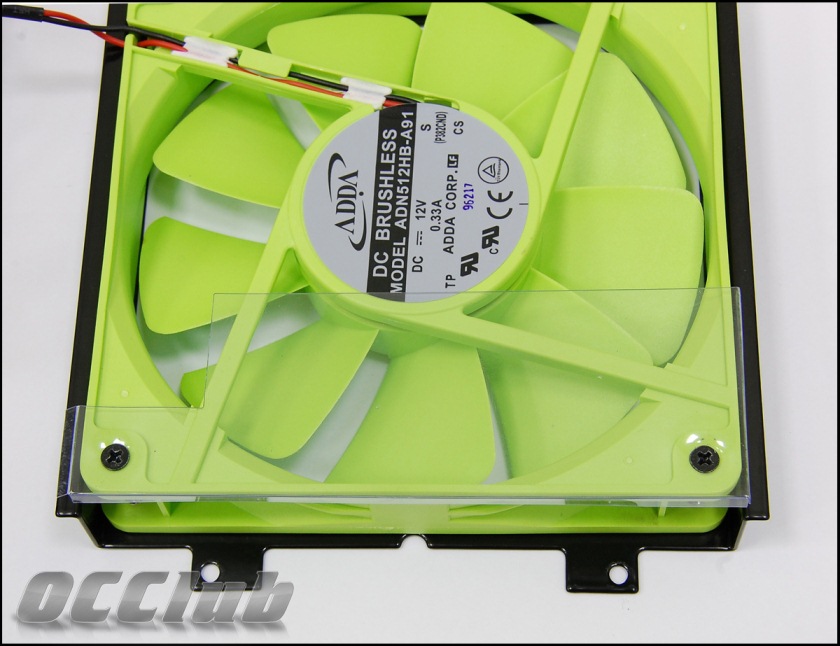
The fan is fixed through rubber bushings to reduce the transmission of vibrations to the case.
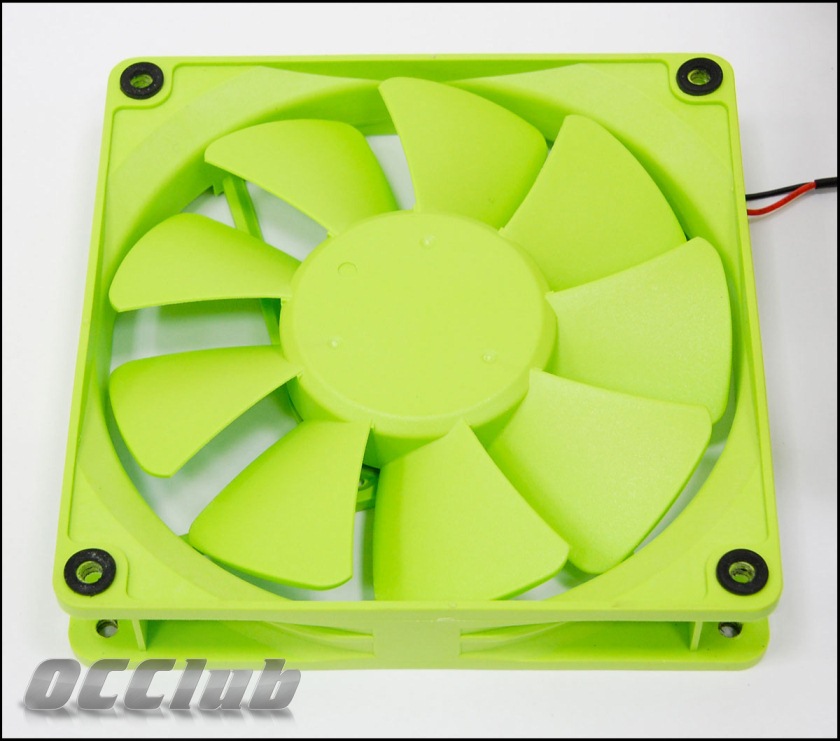
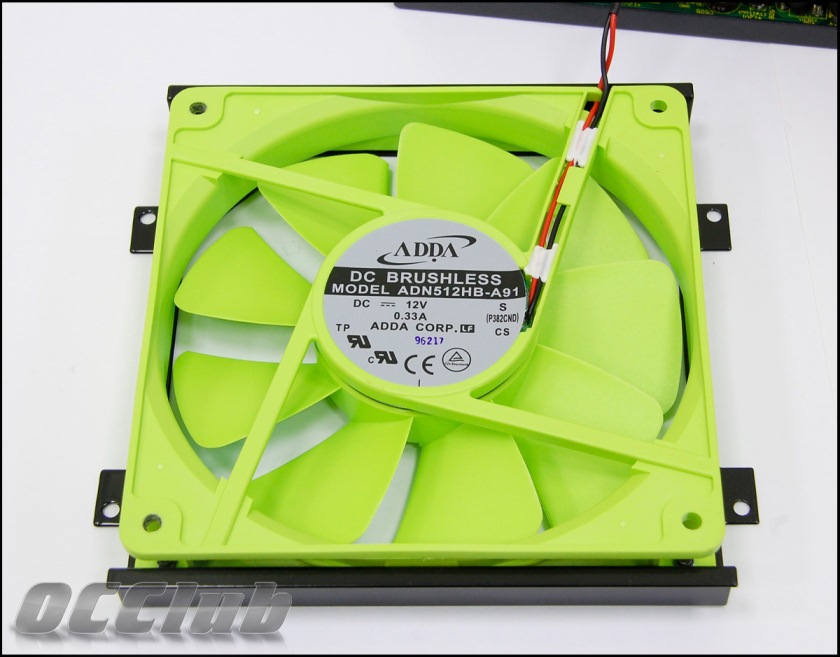
The fan manufacturer is ADDA. The ADN512HB-A91 model used in the XFX 850W BE has the following characteristics:
- - used rolling bearing;
- - the size of the fan is 135x135x25 mm;
- - the maximum speed of rotation of the impeller is 2200 rpm;
- - noise level of 39 dB;
- - power 3.36 W;
- - generated air flow up to 94.8 CFM (cubic feet per minute);
- - weight 220 gr.

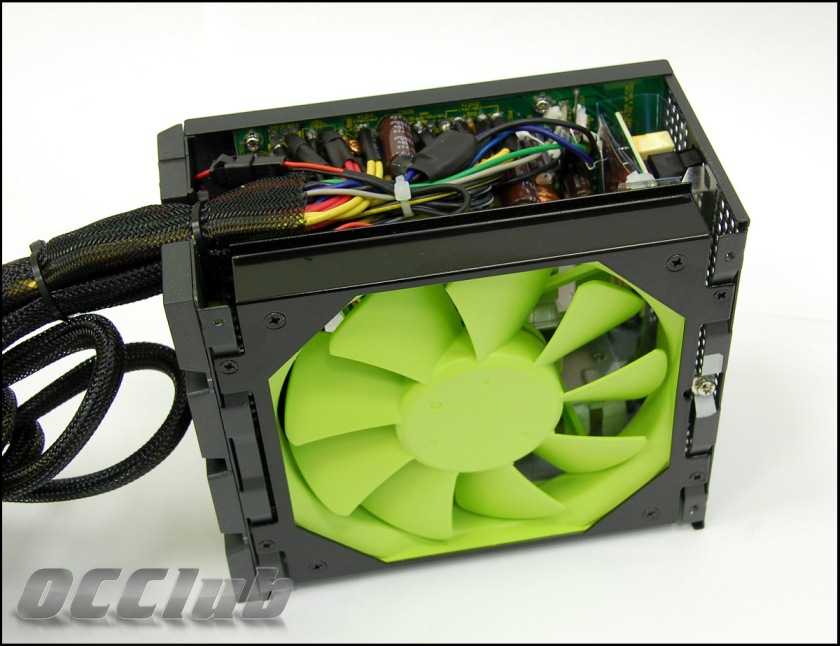
Filling the power supply is completely identical to the PSU Seasonic M12D. This is not something special - many BP manufacturers have long been using the same OEM cards. Only the power supply case and the fan change. Here for comparison, two photos - fillings XFX 850W BE (top) and Seasonic M12D (bottom):

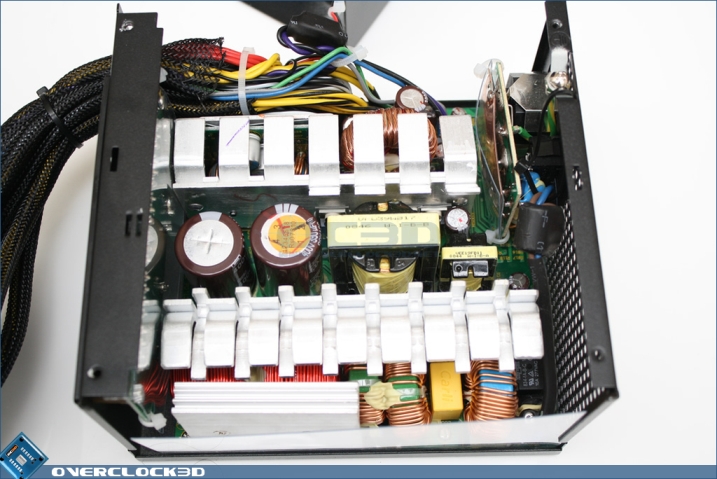
(Picture taken from Overclock3D.net resource)
However, it was not possible to find out the real OEM of the board by its ID number (331785).
On the online database site ( database.ul.com/cgi-bin/XYV/template/LISEXT/1FRAME/gfilenbr.html ) of the certification data, the entered number corresponds to XFX.
Unfortunately, some manufacturers discuss with OEM suppliers that their identification number will be put. Then in the database you will find out that the power supply is released exactly to those under whose name it is sold.

The power supply unit has a single-transformer circuit with a separate DC-DC line converter + 3.3V and + 5V. The converter is assembled on a small separate board and has its own radiator.
The PSU uses high-quality Japanese Nippon Chemi-Con electrolytic capacitors (http://www.chemi-con.co.jp/e/index.html) of three series: KMR, KZE and KZH.
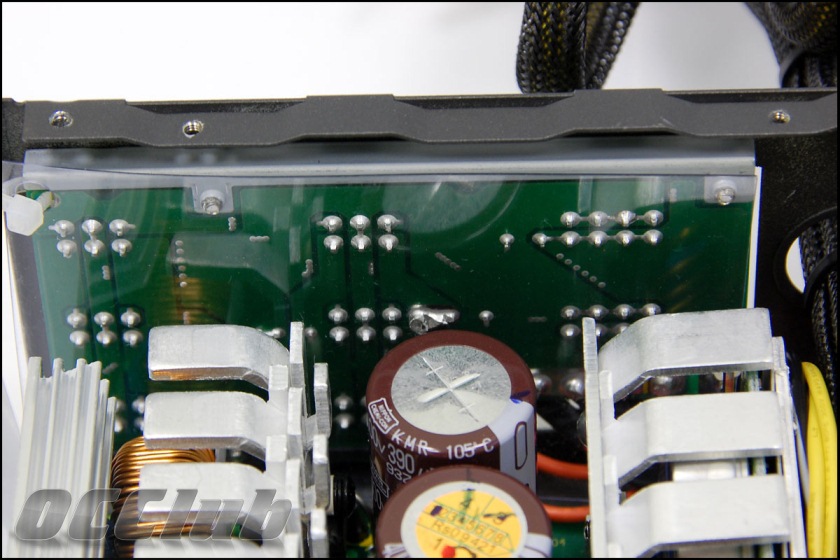
On a separate board housed modular connectors and additional capacitors.
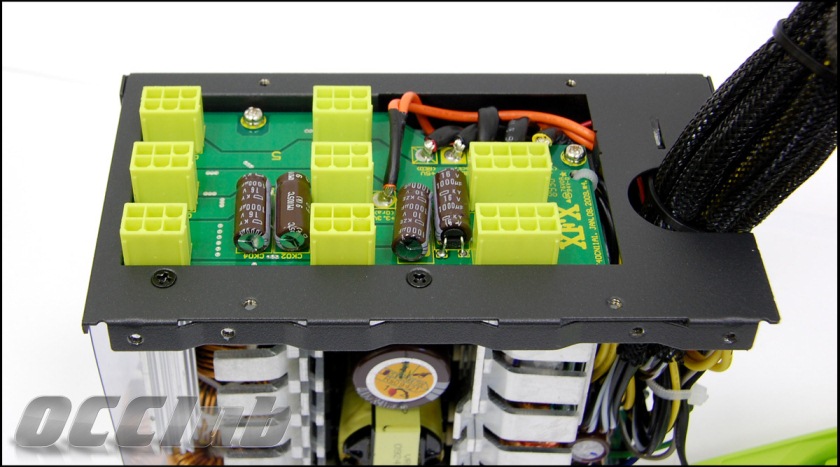
In general, the soldering elements are made very high quality and neat. Thick cable loops are assembled with ties, hinged boards are insulated with gaskets, the necessary parts are fixed with hot glue.
Let's start testing the XFX 850W Black Edition.
To test the power supply, a stand of the following configuration was assembled:
- - Asus P5E motherboard;
- - C2D E8600 and C2Q Q6600 processors (cooling of CBO);
- - RAM DDR2 Crucial Ballistix 2x1 Gb PC6400 5-3-3-12;
- - ATI Radeon HD 4870x2 graphics card - 2 pcs .;
- - WD Raptor WD1500ADFD 150 Gb hard drive;
- - fans for additional cooling of the stand - 2 pcs .;
- - fans used in SVO - 4 pcs.


Measurements of BP performance were carried out in four operating modes of the stand:
- 1) E8600 @ 3.33GHz, HD4870X2 @ 750 \ 900;
- 2) E8600 @ 4,5Ghz 1.4V, HD4870X2 @ 830 \ 970;
- 3) Q6600 @ 3,2Ghz 1.35V, CF HD4870X2 @ 750 \ 900;
- 4) Q6600 @ 4,0Ghz 1.6V, CF HD4870X2 @ 830 \ 970;
Programs for tests:
- 3DMark Vantage - cyclic run of 3D tests (CPU test is disabled) in Performance mode.
- wPrime v1.55 1024M
Testing for each mode of operation of the PSU lasted at least 20 minutes. The wPrime program worked in parallel with 3DMark Vantage, allowing the maximum load on the processor.
The measurements were performed using a Fluke 123 portable oscilloscope and Fluke i410 current tongs from the oscilloscope kit. Auxiliary device served as a multimeter Mustech M890G. The room temperature was maintained at 22-24 grams.
Let's see how the power supply behaves on an overclocked bundle of E8600 and Radeon 4870X2
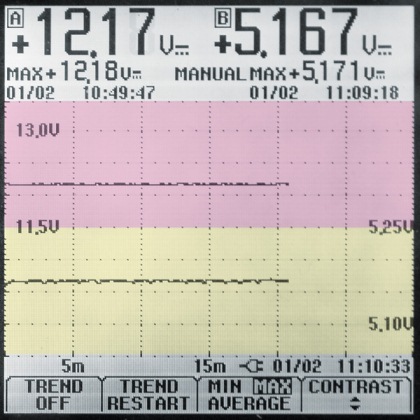
No difficulties for the BP such a load is not. Voltages on the + 12V and + lines
5B is slightly overestimated, but does not go beyond even a 5% deviation. The power supply is weak and the fan is completely inaudible at the overall noise level of the rest of the stand components.
The second test was the same configuration, but with an overclocked E8600 to 4.5 GHz and a video card at a frequency of 830/970 MHz:
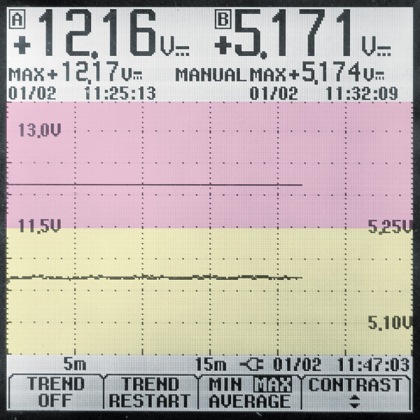
As in the previous test mode, the power supply copes with the load without any problems. Along the + 12V line, the voltage sags to a tiny amount within hundredths of a volt. + 5V increases slightly.
Now let's see how the XFX 850W behaves under a very serious load. E8600 processor was replaced by C2Q Q6600, the second video card 48702 was added for the CrossFire mode.
From my own experience I will say that a bunch of two 48702 is one of the most difficult tests for power supplies today. Despite the fact that ATI's HD5970 has already launched a new flagship performance, the Radeon 4870X2 is still the leader in power consumption among video cards.
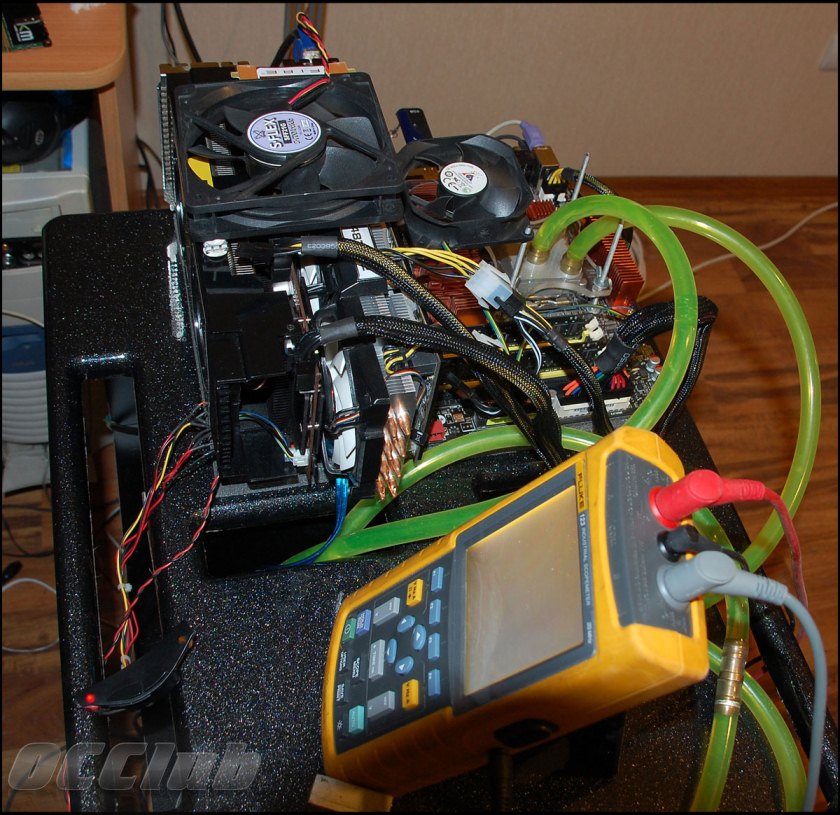
In the third test mode, the C2Q Q6600 processor operated at a frequency of 3.2 GHz @ 1.35 V, a bunch of video cards worked at a frequency of 750/950 MHz

And this test BP withstand with honor. The + 12V line behaves perfectly, without reducing the voltage even by a tenth of a volt. In this mode of operation, the power supply fan spun up, if not to its fullest power, then almost to its fullest. Noise BP, of course, increased, but was heard only the sound of outgoing air without extraneous overtones. The heating of the XFX 850W also increased - the multimeter's thermal sensor detected the temperature of the air leaving the power unit at 45 degrees.
The last test of the power supply for the ability to hold the load was the Q6600 processor overclocked to 4.0GHz @ 1.6V and the 4870X2 video card at 830/970 on chips and memory, respectively.
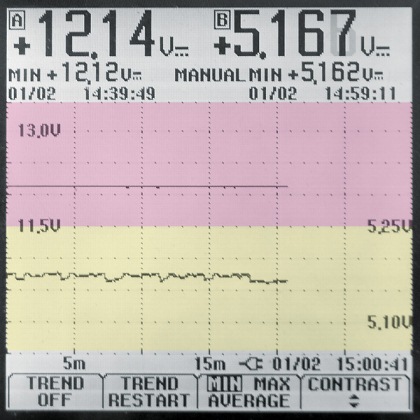
And here we see almost perfect voltage behavior on the + 12V line. Thanks to the successful circuit design, the PSU perfectly copes with such a serious load. During testing, the power supply never turned off from overload or overheating. Line + 5V also behaves quite stable. A slight increase in voltage under load still fits into a 5% deviation.
The following are generalized graphs of the voltage behavior on the + 12V and + 5V lines:


Now let's see what current the system actually consumes along the main lines of the power supply: + 12V, + 5V and + 3.3V.
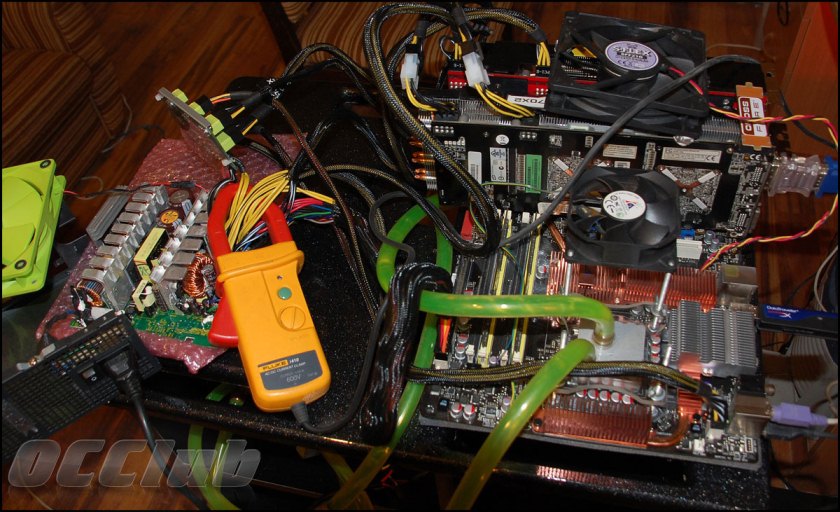
To measure the total current consumption along the lines, we had to completely disassemble the power supply and, in this form, test again in all modes.

From the graph it is clear that the main load on the power supply is due to the + 12V line. The rest of the lines do not create a perceptible load, and the current to them weakly depends on the acceleration of the computer.
Please note that in the 4th test, when the quad-core Q6600 processor and a bunch of 4870X2 are practically overclocked, the maximum current consumption still does not reach the declared values along the + 12V line, namely 70A.
The current values shown in the graph above are average values. The maximum peak current, which the device recorded at some moments of the 4th test, reached 58A.
Conclusion
Well, let's summarize. There is no doubt that XFX has released a very mature product to the market in the form of an XFX 850W Black Edition power supply. The power supply circuitry, also used by Seasonic, has proven to be excellent, providing reliable performance and stable performance. High-quality electrolytic capacitors used in this PSU increase the working life of the device. The power supply itself perfectly coped with the tasks: excellent voltage stabilization across all lines, especially + 12V, quiet fan operation at low and medium load, a thoughtful set of modular cables, bright and stylish packaging design and PSU. Among the shortcomings worth noting very hard wires. The rest of the power supply showed itself only with the best hand.
Source: https://habr.com/ru/post/81968/
All Articles